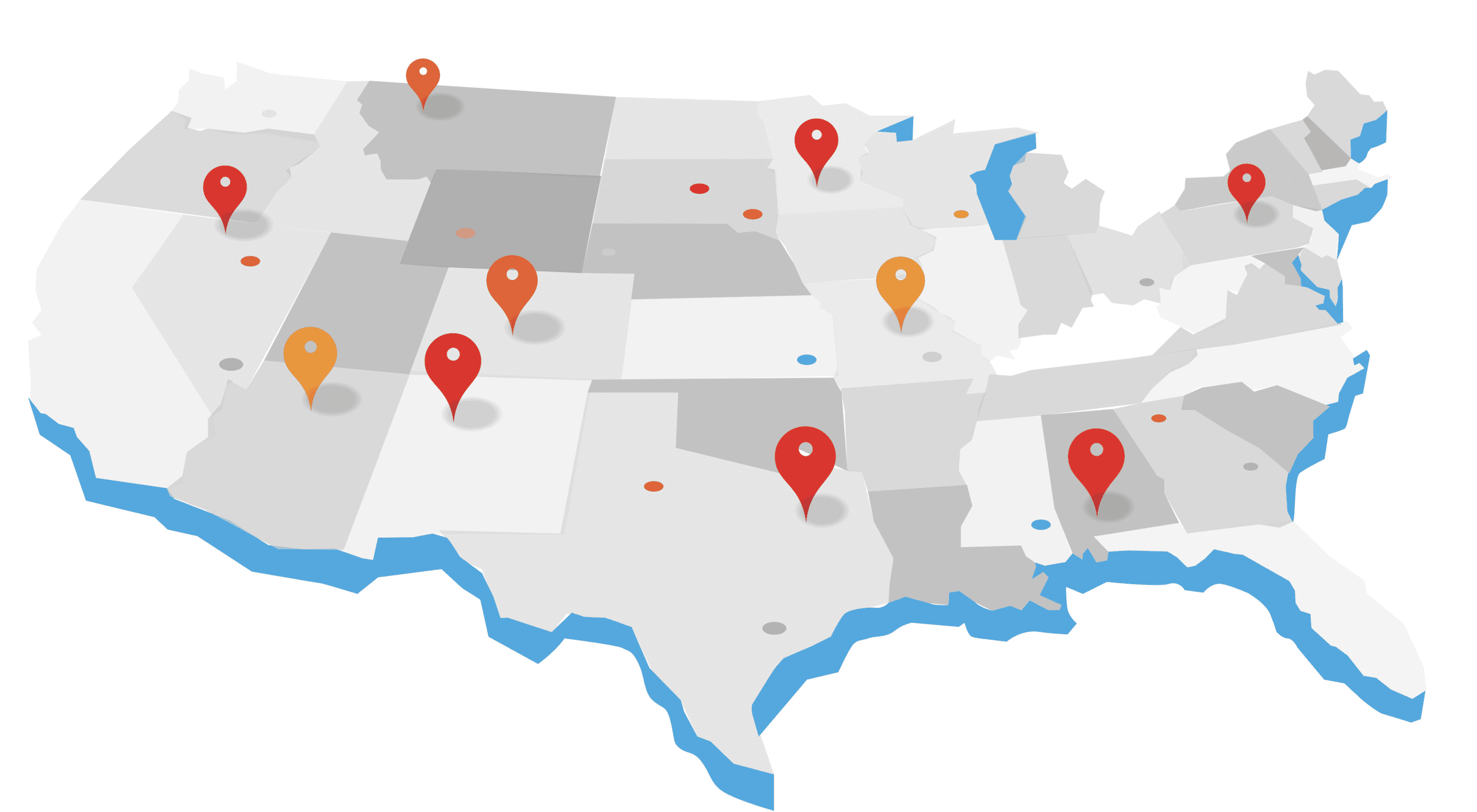
Montana’s unemployment rate has remained below 3% for nearly two years, and total employment reached a record high in July 2023. Gov. Greg Gianforte attributes the growth to the state’s solid workforce. “Skilled workers with our strong Montana work ethic are in high demand. We’ll continue to prioritize trades education and expand apprenticeship opportunities to empower Montana workers and ensure Montana employers have a highly skilled workforce,” he said. Several new projects have been announced in the past year. Excavator product manufacturer Felco Industries recently expanded in Missoula. Modular home manufacturer Dvele broke ground on a $80 million manufacturing plant in June 2023 in Butte, and Glassbaby announced in May 2023 an expansion in Livingston that will create as many as 140 jobs.
Big Sky Trust Fund: Offers incentives of up to $7,500 per job for job for land, equipment, rehabilitation costs and employee training for projects in high-poverty areas.
Private Sector Workforce Training Grant: Offers up to $5,000 for training expenses per eligible job created.
New or Expanding Industry Tax Abatement: Offers a tax abatement of up to 75% for the first five years of operation to businesses that earn half or more of their annual gross income from out-of-state sales.
New Markets Tax Credit: Offers credits that can be used or sold for projects that have at least a $4 million investment.
Governor’s Office of Economic Development
business.mt.gov
Montana Business Assistance Connection
mbac.biz
Missoula Economic Partnership
missoulapartnership.com
Big Sky Economic Development
bigskyeconomicdevelopment.org
The Montana Automation Loan Program helps Montana manufacturing businesses to update, replace or expand equipment. Eligible applicants must derive at least 51% of their revenue from the sale of manufactured goods and have operated in the state for at least three years. Businesses that receive a loan get a 0% deferred loan for up to 50% of the purchase price, up to $500,000 of the production equipment on the state participation portion.

0

1:00 - 5:00 pm
Over 70% of Executives Surveyed Agree: Many Strategic Planning Efforts Lack Systematic Approach Tips for Enhancing Your Strategic Planning Process
Executives expressed frustration with their current strategic planning process. Issues include:
Steve Rutan and Denise Harrison have put together an afternoon workshop that will provide the tools you need to address these concerns. They have worked with hundreds of executives to develop a systematic approach that will enable your team to make better decisions during strategic planning. Steve and Denise will walk you through exercises for prioritizing your lists and steps that will reset and reinvigorate your process. This will be a hands-on workshop that will enable you to think about your business as you use the tools that are being presented. If you are ready for a Strategic Planning tune-up, select this workshop in your registration form. The additional fee of $695 will be added to your total.

2:00 - 5:00 pm
Female leaders face the same issues all leaders do, but they often face additional challenges too. In this peer session, we will facilitate a discussion of best practices and how to overcome common barriers to help women leaders be more effective within and outside their organizations.
Limited space available.

10:30 - 5:00 pm
General’s Retreat at Hermitage Golf Course
Sponsored by UBS
General’s Retreat, built in 1986 with architect Gary Roger Baird, has been voted the “Best Golf Course in Nashville” and is a “must play” when visiting the Nashville, Tennessee area. With the beautiful setting along the Cumberland River, golfers of all capabilities will thoroughly enjoy the golf, scenery and hospitality.
The golf outing fee includes transportation to and from the hotel, greens/cart fees, use of practice facilities, and boxed lunch. The bus will leave the hotel at 10:30 am for a noon shotgun start and return to the hotel after the cocktail reception following the completion of the round.